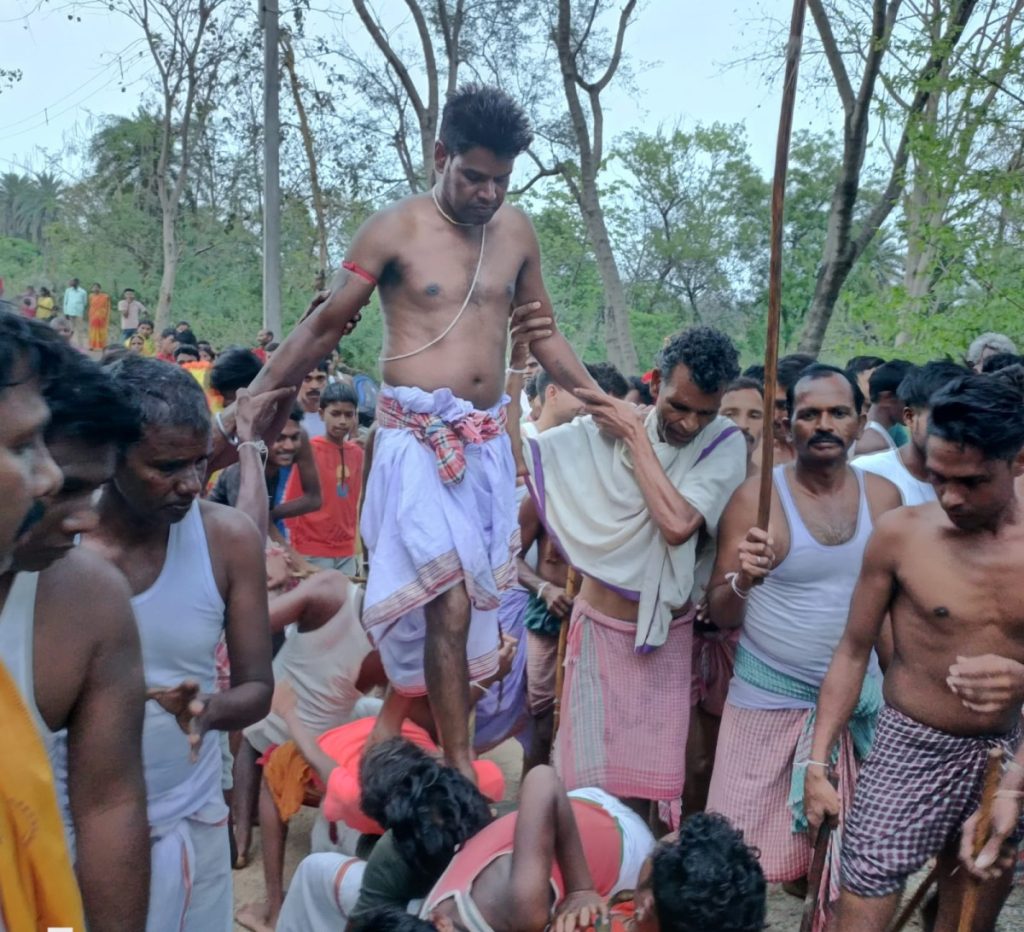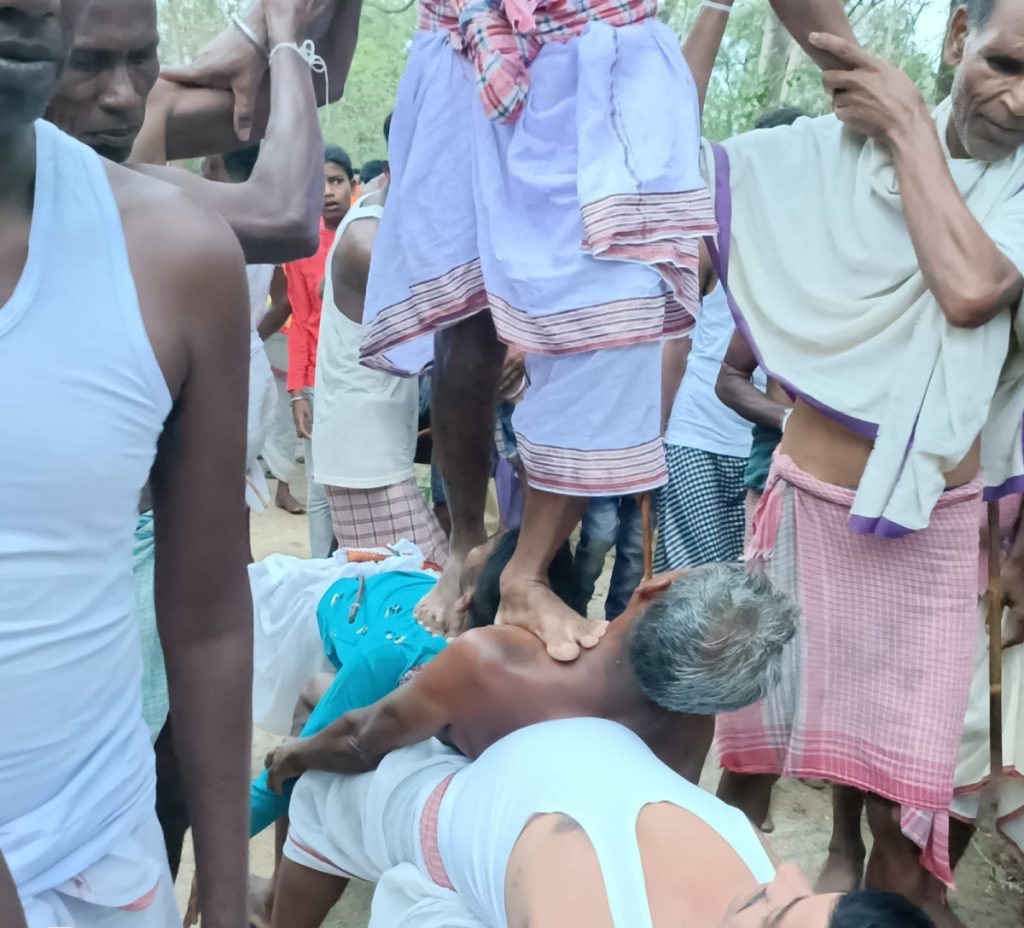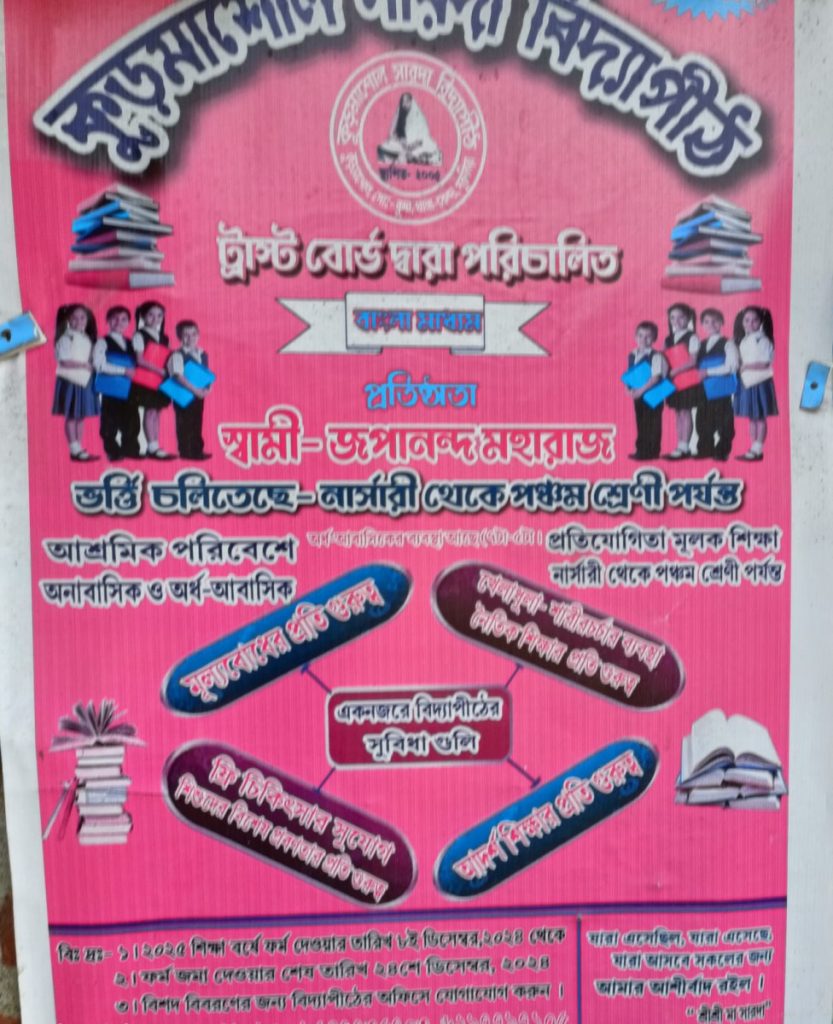Under Brahmin Feet: The Resurgence of a Ritual Fuels Fears of Caste Imposition in a Bengal Village
Manbazar (Bengal): The three-hour bus journey from Purulia to Manbazar offers a stark visual shift. Saffron flags which flutter like sentinels along the roadside grow in number until the roads taper off and you are left on a dense jungle trail to Kurmasol.
Nestled in Purulia’s Manbazar block, Kurmasol is a village of contrasts. Home to 300 families, including 35 Muslim households, its history traces back to the Kashipur royals and later regional landlords. The village is mostly made up of Kurmi Mahato and tribal communities.
Signs of neglect are many. A lone Left Front-era primary school is crumbling. The village does not have a high school, health centre or even bus connectivity. Villagers trek two kilometres to Mahara village for access to transportation. Rainwater is a lifeline but crops of rice and vegetables often wither in this drought-prone area.
For generations, Hindus and Muslims here have shared water, festivals, and hardships at Kurmasol. But as Nani Pada Mahato, a lifelong resident, observes, “Something feels different now. There’s a tension we never knew before.”
This does not mean that there has been violence or outward expressions of difference. But, as locals, say, political presence has led to a marked shift in how rituals and festivities are celebrated.
Since 2015, a dormant ritual called “Brahmin Bandana” – once symbolically observed among the tribal population – has been reintroduced in Kurmasol as part of a local festival. The revival of this old ritual, which was originally tied to Bengali folk culture, in this remote village is sparking concerns over the dilution of tribal culture and the less-than-subtle imposition of a hierarchical and casteist practice.
On Chaitra Sankranti, the final day of the Bengali year, non-Brahmin men from Kurmasol and neighbouring villages engage in a symbolic act of lying prostrate and creating a human pathway for a Brahmin priest to walk over. Participants believe this act of submission will usher in prosperity for the coming year.

The Brahmin Bandana ritual in Kurmasol. Photo: Joydeep Sarkar.
As dusk approached this year on April 14, non-Brahmin men from Kurmasol and the 18 surrounding villages congregated by a pond. Following a ritual bath, they donned new dhotis and vests. A Brahmin priest then tied threads around their wrists, marking the commencement of the “jangal” – literally forest – ritual. Participants proceeded to lie supine on the ground, their hands and feet touching the earth, forming a 200-metre human pathway stretching from the pond towards the village temple. The Brahmin priest then walked across their chests and backs, as crowds cheered on.
“We fast the whole day and eat only one vegetarian meal the next. When the Brahmin’s feet touch our chest, it blesses us for the year. This belief came from our grandfathers," says Krishnapada Mahato, one of the participants.
But there is a difference that Krishnapada is keen to highlight. "A few people used to do it earlier, but now if you don’t participate in this ritual, you're socially alienated,” he says.

The Brahmin Bandana ritual in Kurmasol. Photo: Joydeep Sarkar.
The Brahmin treads carefully so his feet do not touch the ground. It touches only the bodies. It takes him over an hour to walk this path. People hold babies up to so they can touch his feet.
Adjacent to the temple, two parallel village fairs are underway, one overseen by the Trinamool Congress, and the other organised by the Bharatiya Janata Party.
“This ritual supposedly began 250 years ago. Women still perform a milder version, but among men, it’s now the craze. Every family has at least one member doing this. In 2017, BJP entered the festival and this led to conflicts. The fair split into two – an original and a BJP version. However, the jangal ritual is still done together,” says Haladhar Mahato, local TMC leader. Haladhar is the organiser of the fair, known locally as the Atharo Mouza Mela – literally, fair for 18 mouzas or villages.
BJP’s version of the fair has a smaller footfall. Rakesh Mahato, the organiser of this parallel fair credits it with preservation of religious values. “We are preserving Sanatani values and using this tradition for the well-being of society. We are inspiring Sanatan believers to follow these religious customs," he says.
'Casteism' concerns
This emphasis on “Sanatani values” and the central role of a Brahmin priest in a ritual involving the subjugation of non-Brahmins, many of whom belong to tribal communities, has raised concerns about the erosion of distinct tribal cultural practices.

A board advertising the Sarada Vidyapith school. Photo: Joydeep Sarkar.
Adding to these concerns is the influence of the Kurmasol Sarada Vidyapith school, established by spiritual leader Swami Japananda. This institution, which combines moral and ritualistic teaching with the Rashtriya Swayamsevak Sangh (RSS) curriculum, has risen to become the villagers’ preferred choice, largely due to the dilapidated condition of the state-run school.
“They are using Sarada Vidyapith as a centre for brainwashing. They are establishing a system where Dalits are placed beneath the feet of Brahmins. And it's not just Kurmasol, they are setting up schools in surrounding villages too. Through them, the BJP is building its base in Jangalmahal,” says local youth Kanti Prasad Mahato. Kanti Prasad says that he is trying to remain vigilant.
Many locals claim that a growing number of tribal youth are being exposed to and indoctrinated with ‘Sanatani’ values. They are the most enthusiastic participants of the ‘Brahmin Bandana’.
Locals also claim that students are taught to revere caste hierarchy, obey Brahmins, and see tribal customs as backward. Those opposing rituals like the ‘Brahmin Bandana’ are warned of divine punishment – children born with crooked faces, ruined crops, or family misfortune.
“I’m too old to participate, so I just bow from afar. This tradition is very old. In my childhood, it was simple. Now there’s so much fanfare, drums, lights, and expense. It’s clear that it is all funded by invisible hands,” says Amulya Mondal, a village elder.
Despite the growing pressure, not everyone is yielding to terms set by political agenda. In the 2023 panchayat elections, the ruling party, TMC, dominated most of the areas. Even the Left managed to gain control of one panchayat. During this year’s Ram Navami celebration, a Hindutva-dominated event in the state now, Muslim youth took part in a traditional lathi dance.
The fair lasts five days, with Chhau dance performances and varied entertainment. Yet, survival in Kurmasol hinges on rain, not rituals.
Rahman Ansari, an elderly Muslim farmer, visits the festival every year. He puts it simply, “If god gives us rain, my five bighas will yield crops and I will survive. So I pray for rain.”
Translated from the Bengali original by Aparna Bhattacharya.
This article went live on April nineteenth, two thousand twenty five, at zero minutes past eight in the morning.The Wire is now on WhatsApp. Follow our channel for sharp analysis and opinions on the latest developments.




